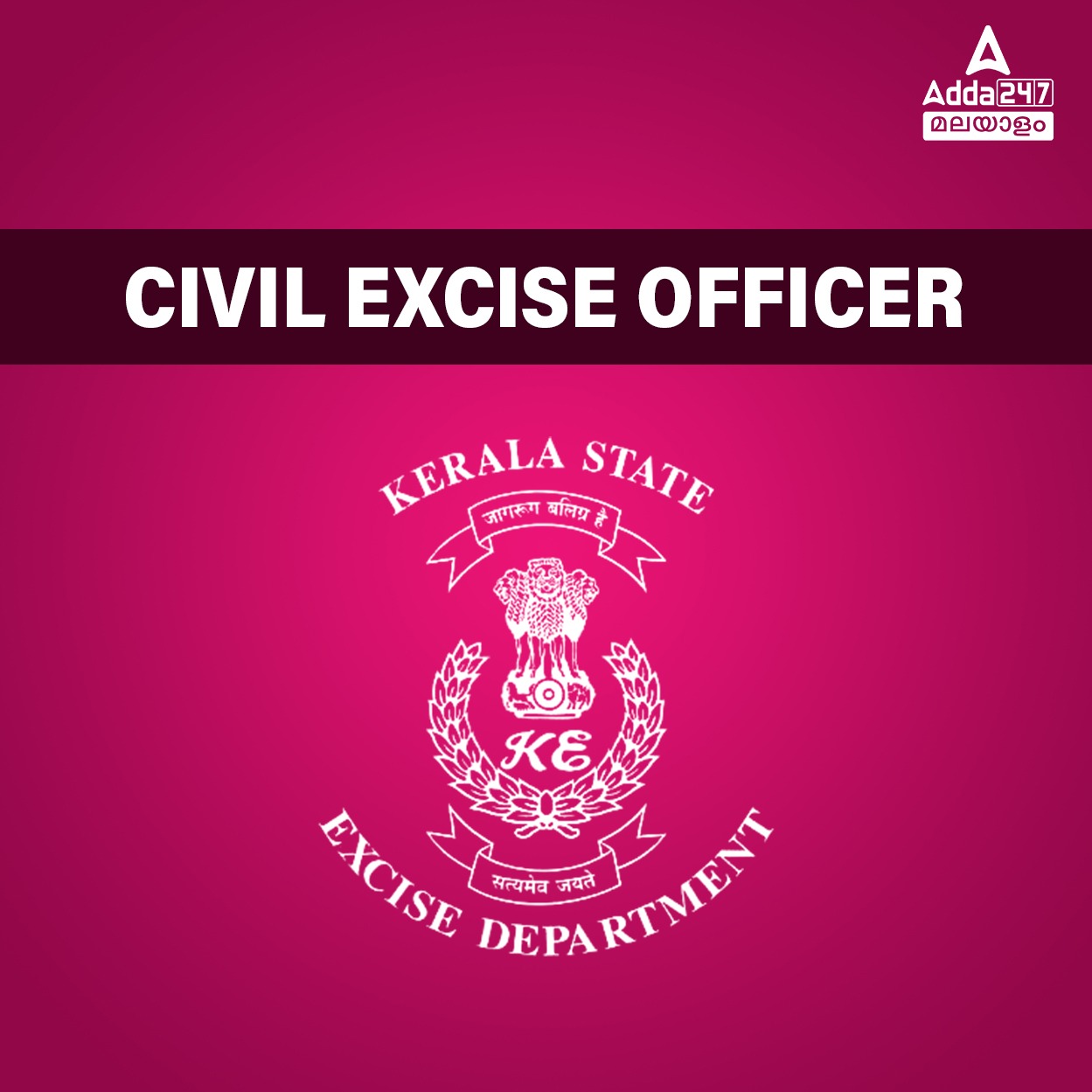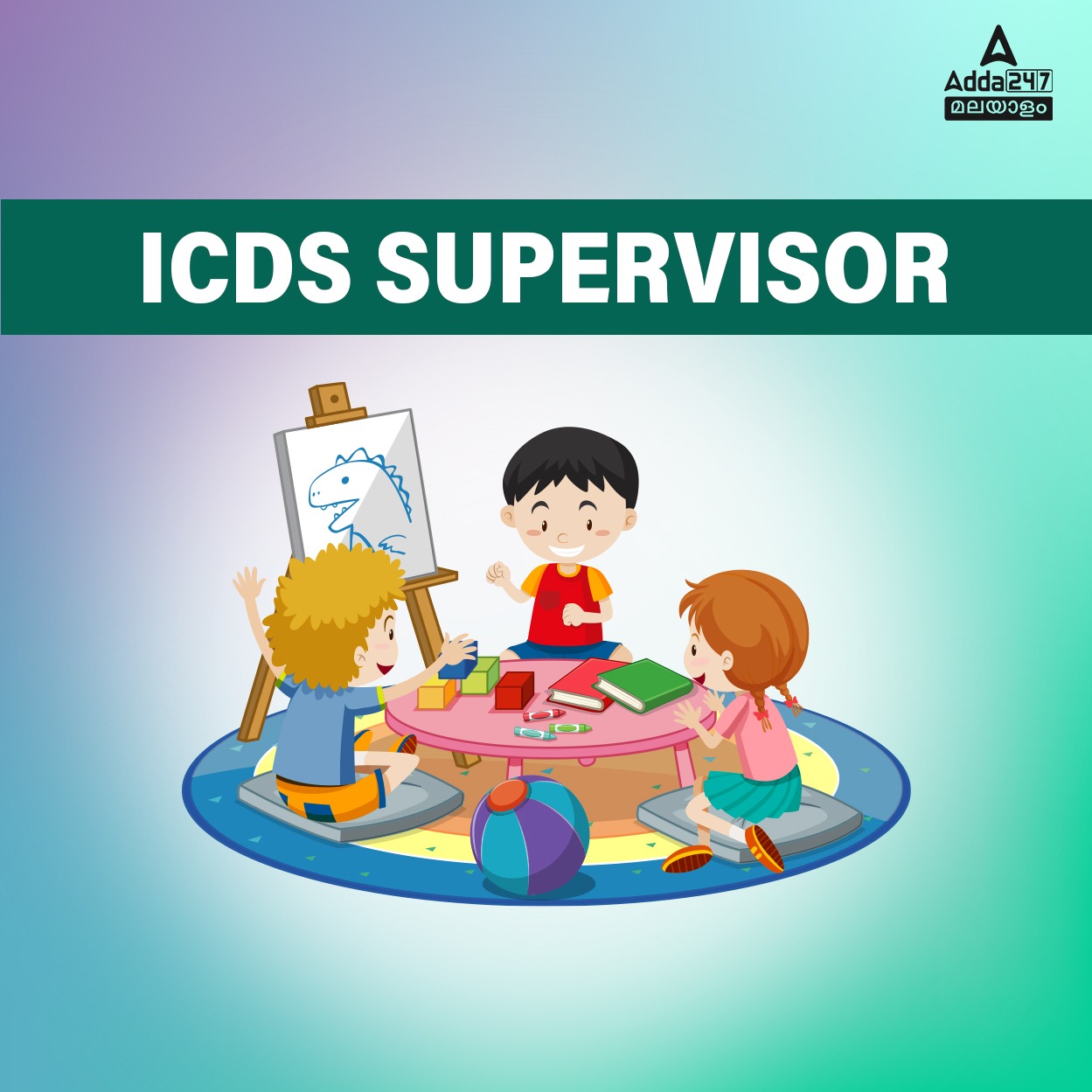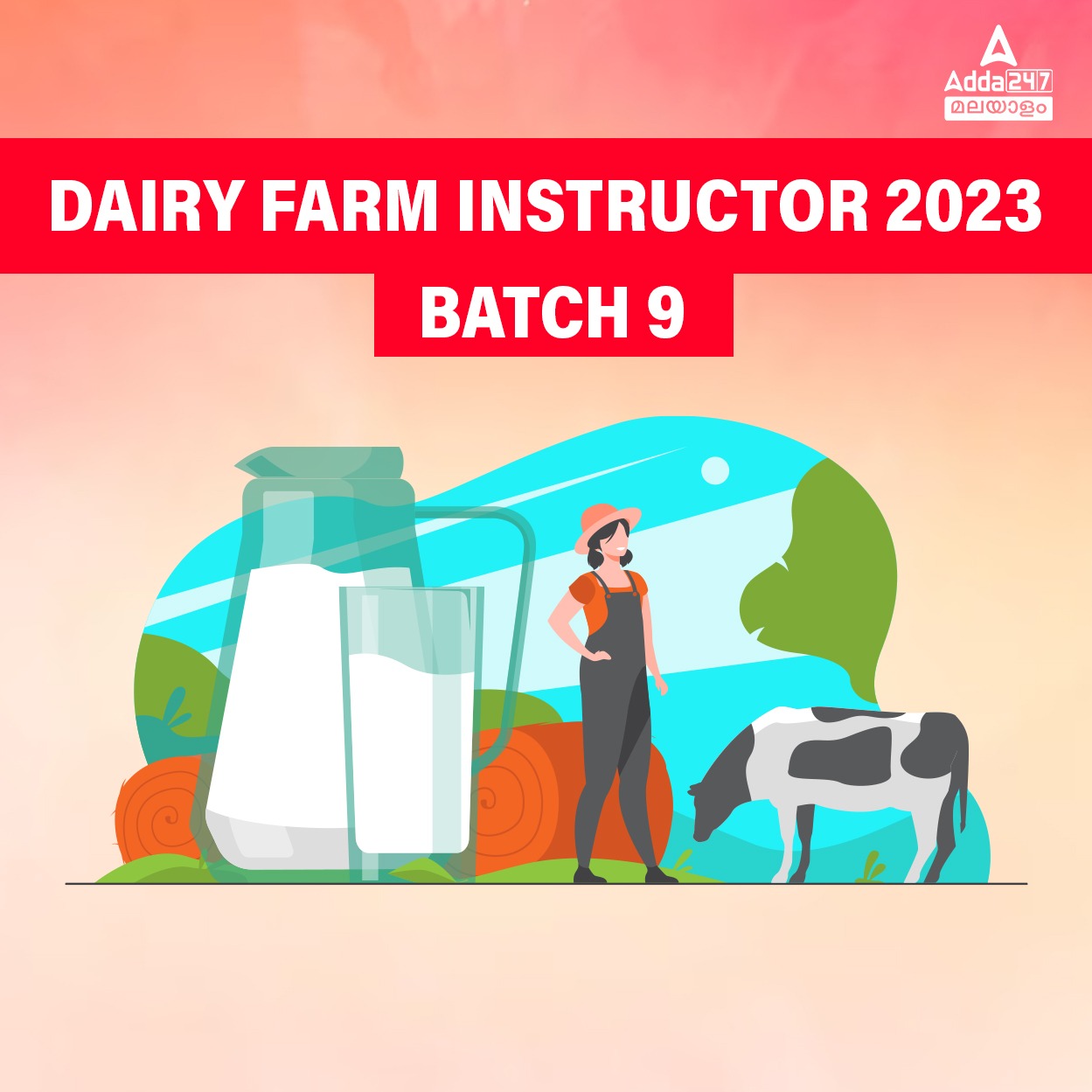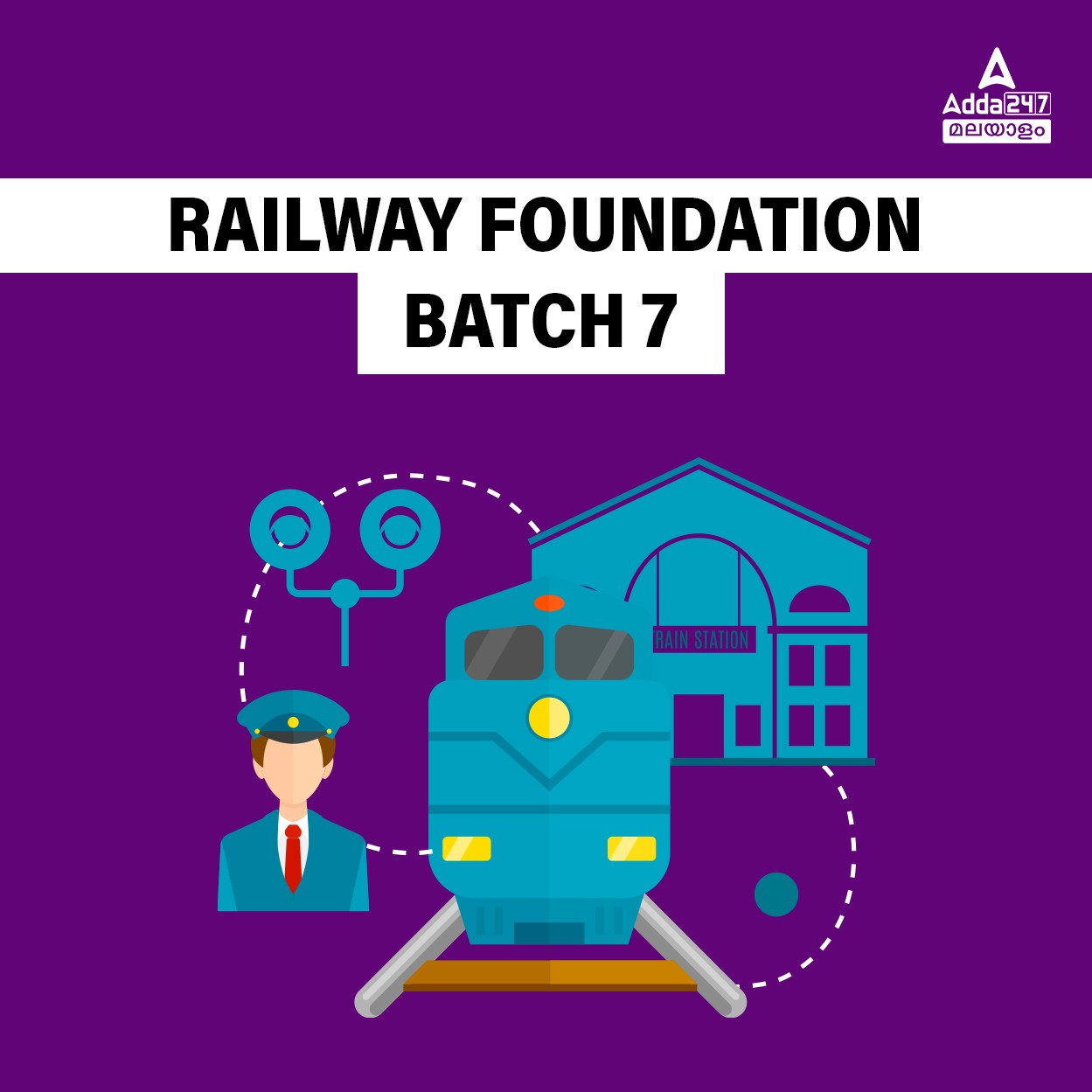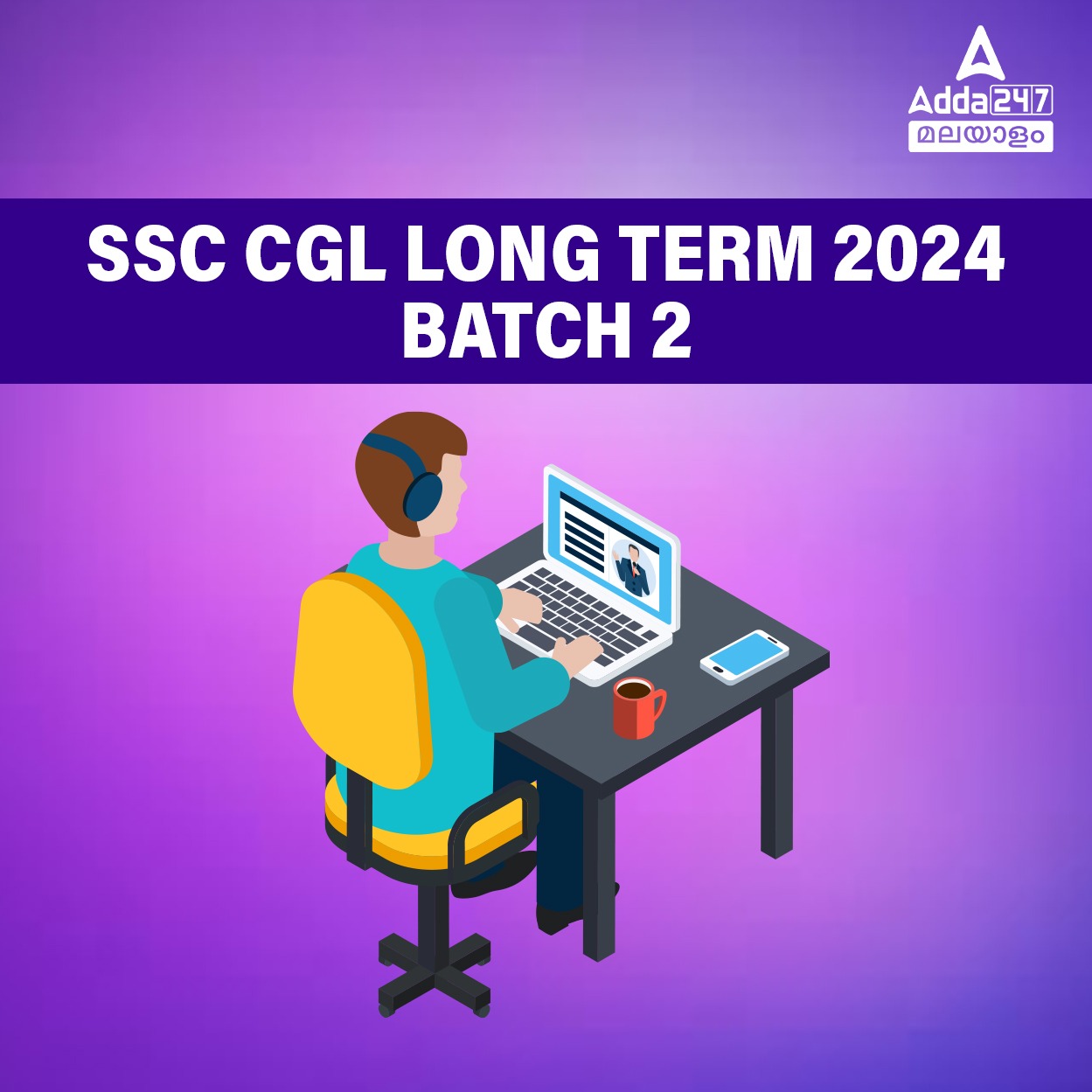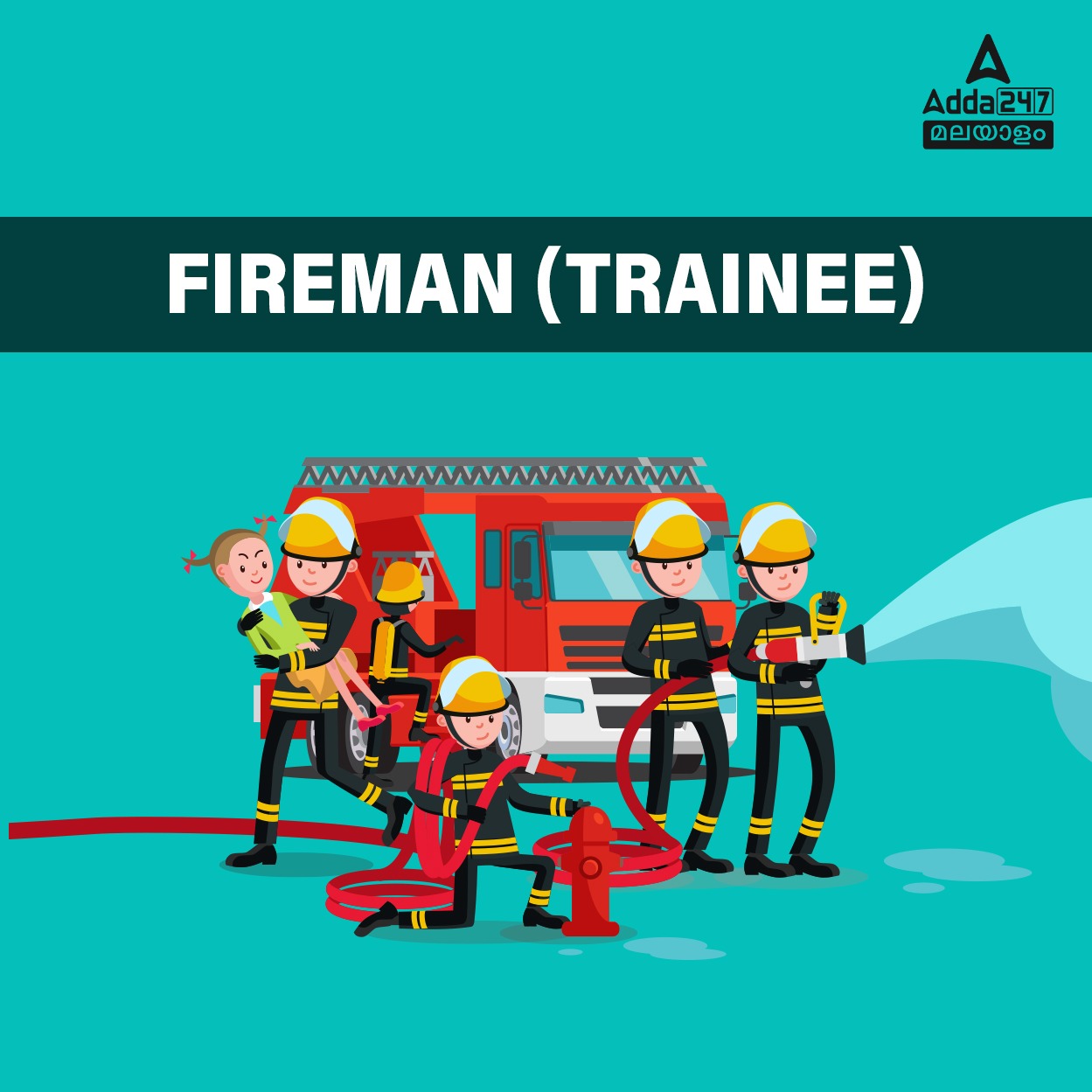Table of Contents
25 Important Previous year Q & A | Kerala Administrative Service Study Material [22 November 2021]: KAS പരീക്ഷകൾക്ക് വിജയം നേടാൻ ധാരാളം മുൻകാല ചോദ്യപേപ്പറുകൾ വിശകലനം ചെയ്യേണ്ടതുണ്ട്. KAS ലേക്ക് ഒരു ജോലി എന്ന സ്വപ്നം പൂവണിയാൻ ശ്രമിക്കുന്ന എല്ലാ ഉദ്യോഗാർത്ഥികൾക്കും ഇനി വരാൻ പോകുന്ന പരീക്ഷകളെ ധൈര്യത്തോടെ നേരിടാൻ ഞങ്ങളിതാ നിങ്ങൾക്കായി മുൻകാല വർഷങ്ങളിലെ ചോദ്യപേപ്പറുകളിൽ നിന്നും പ്രധാനപ്പെട്ട ചോദ്യങ്ങൾ തിരഞ്ഞെടുത്തു അവയുടെ ഉത്തരങ്ങളും വിശദീകരണത്തോടെ നൽകിയിരിക്കുന്നു. മുൻകാല വർഷങ്ങളിലെ 25 ചോദ്യങ്ങളും , അവയുടെ ഉത്തരങ്ങളും (25 Important Previous year Q & A) ചുവടെ കൊടുത്തിരിക്കുന്നു.
Fill the Form and Get all The Latest Job Alerts – Click here
[sso_enhancement_lead_form_manual title=”നവംബർ 2021 ആഴ്ചപ്പതിപ്പ് | സമകാലിക വിവരങ്ങൾ
November 3rd week” button=”ഡൗൺലോഡ് നൗ” pdf=”/jobs/wp-content/uploads/2021/11/22155326/Weekly-Current-Affairs-3rd-week-November-2021-in-Malayalam-1.pdf”]
Kerala Administrative Service Study Material: 25 Important Previous year Questions (25 ചോദ്യങ്ങൾ)
- Which kingdom had matriarchy in South India ?
(A) Pandya (B) Chera (C) Pallava (D) Chola
- Which script was introduced in South India by Ashoka ?
(A) Prakrit (B) Palis (C) Brahmi (D) Kharosthi
3. Mark the correct statement :
1. “Mughal rule began and ended at Panipat”.
2. Marathas were defeated in the Third Battle of Panipat.
3. French rule began with Panipat.
4. French power ended with Panipat.
(A) 1 is correct. (B) 2 is correct.
(C) Both 1 and 2 are correct. (D) None of the above.
4. Growth of vernacular literature in Medieval India was the greatest contribution of :
(A) Vijayanagar Kingdom (B) Bahmani Kingdom
(C) Bhakti movement saints (D) Sultans of Delhi
5. Mark the correct statement :
1. Nizamuddin Auliya was the contemporary of Muhammad Tughluq.
2. Tulsidas was influenced by Shaikh Salim Chishti.
(A) 1. only. (B) Both 1 and 2 (C) 2 only (D) Neither 1 nor 2
6. Which ruler of South India planted the Tree of Liberty ?
(A) Tipu (B) Haider Ali (C) Prataparudra Deva (D) Dost Muhammad
7. Mark the incorrect statement :
1. Ashtapradhan is associated with Shivaji.
2. Shivaji was the organiser of Maratha Rajya.
3. Sulh-i-kul was the idea of Shivaji.
4. Treaty of Purandar took place with Shivaji.
(A) 1 is incorrect. (B) 2 is incorrect. (C) 3 is incorrect. (D) All are incorrect.
8. Mahmud Gawan was the minister of :
(A) Bahmani Kingdom (B) Vijayanagar
(C) Bidart (D) Berar
9. Which ruler used marble in his buildings ?
(A) Akbar (B) Jahangir (C) Shah Jahan (D) Aurangzeb
10. Who wrote the book ‘A Nation in the Making’ ?
(A) Sarojini Naidu (B) Jawaharlal Nehru
(C) Abul Kalam Azad (D) S.N. Banerjee

11. Which among the following is not a work of Pandit Karuppan ?
(A) Anandasutram (B) Lankamardanam
(C) Sthothramandaaram (D) Acharabhooshanam
12. Consider the following pairs :
Organization Founder
1. Vidyaposhini Sahodaran Ayyappan
2. Ananda Maha Sabha Vagbhadananda
Which of the pairs given above is/are correctly matched ?
(A) 1 only (B) 2 only (C) Both 1 and 2 (D) Neither 1 nor 2
13. Consider the following statements :
1. She was nominated to Cochin legislative assembly to advise about the Namboothiri Bill.
2. She was an elected member of Malabar District Board
3. She was related with Paliyam Satyagraha
4. She wrote the book ‘Akalathiruttu’.
Which among the above statement/statements regarding Arya Pallom is/are correct ?
(A) 1 only. (B) 1 and 2 only (C) 1, 2 and 3 only (D) All of the above
14. With reference to the Cochin Nair Act of 1937-38, consider the following statements: :
1. It abolished Marumakkathayam and joint families.
2. It prohibited the marriage of a female less than 16 years of age and male less than 21 years of age.
3. It also prohibited the practice of polygamy.
Which of the statement/statements given above is/are correct ?
(A) 1 only. (B) 2 only (C) 3 only (D) All of the above
15 Name the former Chief Minister of Kerala who got opportunity to become member of Cochin Praja Mandal, Thiru-Kochi, Kerala Legislative Assemblies and Rajya Sabha.
(A) EMS Namboothiripad (B) R. Sankar
(C) C. Achutha Menon (D) K. Karunakaran
16. The Kerala Panchayat Raj Bill 1994 was passed by the assembly during the tenure of which Minister for Local Administration :
(A) M.K. Munir (B) C.T. Ahammadali
(C) V.J. Thankappan (D) K. Balakrishna Pillai
17. Regarding the second coalition ministry of EMS Namboothiripad, consider the following statements :
1. The Ministry took office in the year 1966.
2. It consisted of CPI(M), CPI, the Muslim League, the RSP, the Karshaka Thozhilali Party and the Kerala Socialist Party.
3. C.H. Muhammed Koya was the Minister for Education.
Which of the above statements are correct ?
(A) 1 and 2 (B) 1 and 3
(C) 2 and 3 (D) None of the above
18. The person who resigned from the Aikya Kerala Committee with the belief that Staté headed by a Rajapramukh will not be helpful to the formation of a democratic State.
(A) K.P. Kesava Menon (B) K. Kelappan.
(C)T. Prakasam (D) T.K. Madhavan
19. Which among the following political parties participated in the Vimochana Samaram ?
(A) PSP (B) RSP
(C) None of the above (D) Both of the above
20. Name the first MLA who lost the seat as a result of a court order ?
(A) Bhargavi Thankappan (B) M. Umesh Rao
(C) Rosamma Chacko (D) Rosamma Punnose
21. Which one of the following events is related with the 2nd World War period (1939-45) ?
(A) Moroccan crisis (B) Zimmermann Telegram
(C) Operation Barbarossa (D) The Berlin Blockade
22. Consider the following pairs :
1. Ideas Ideology
2. NATO Capitalism
3. SEATO Communism
4. NAM Neo-Colonialism
5. AUTARKY International Trade
Which of the pairs given above are correctly matched ?
(A) 1, 2 and 3 only (B) 3 and 4 only (C) 1 only (D) 2 and 4 only
23. Consider the following statements :
1. The process of victory of anti-colonial struggles and achievement of freedom by colonies came to be known as decolonisation.
2. These struggles were won only by means of force and violence.
3. Anti-colonial struggles achieved their first success in Africa and then in Asia.
Which of the statements given above is/ are correct ?
(A) 1 and 2 only (B) 1 only (C) 1 and 3 only (D) 1, 2 and 3
24. Consider the following statements :
1. The International Labour Organization (ILO) was established after the 1st World War to secure social justice.
2. The ILO was part of the Treaty of Versailles of 1919.
3. The ILO became the first specialised agency of the UN in 1946.
4. India is a founder-member of the ILO.
Which of the statements given above is/are correct ?
(A) 1 and 2 only (B) 4 only (C) 2, 3 and 4 only (D) 1, 2, 3 and 4
25. With reference to the consequences of the Industrial Revolution, which of the following statements is/ are correct ?
1. Subjugation of agricultural countries of the world
2. Increased unautomated production
3. Rise in per capita income
4. Select the correct answer using the codes given below :
(A) 1 and 3 only (B) 2 only
(C) 2 and 3 only (D) 1, 2 and 3:

Kerala Administrative Service Study Material: 25 Important Previous year Solutions (25 പരിഹാരങ്ങൾ)
- Ans. (X)
- Ans. (C) Brahmi
Soln. The Parkrit word “Dha-m-ma” (Dharma) in the Brahmi script, as inscribed by Ashoka in his Edicts. Topra Kalan Pillar, now in New Delhi ( circa 3rd- century BCE ). Therefore, Brahmi script was introduced in southern India during the time of Ashoka. Ashokan inscriptions are found on carved rocks, caves, stones slabs, and rock pillars. We also have some examples of short Brahmi inscriptions on small seals made of ivory, bone, stone, and terracotta dated to Mauryan times. Other examples come from potsherds and copper plates. With the rise of Buddhism as the dominant faith in India, we find Brahmi inscriptions on monumental constructions known as ‘donative records,’ stating the names of different donors. The early 2nd century BCE saw the beginning of Brahmi inscriptions on coins.
- Ans. (B) 2 is correct.
Soln.
(1) “Mughal rule began and ended at Panipat” – incorrect
Mughal dynasty, Mughal also spelled Mogul, Persian Mughūl (“Mongol”), Muslim dynasty of Turkic-Mongol origin that ruled most of northern India from the early 16th to the mid-18th century. After that time it continued to exist as a considerably reduced and increasingly powerless entity until the mid-19th century.
(2) Marathas were defeated in the Third Battle of Panipat – correct
The Third Battle of Panipat fought between the Maratha Confederacy and the Durrani Empire on January 14, 1761, resulted in a catastrophic defeat for the Marathas. Yet all accounts of the battle say that from the morning till afternoon, the Marathas were winning and the Afghan right wing had been smashed.
(3) French rule began with Panipat. – incorrect
In 1669, Marcara succeeded in establishing another French factory at Masulipatam. In 1672, Fort Saint Thomas was taken but the French were driven out by the Dutch. Chandernagore (present-day Chandannagar) was established in 1692, with the permission of Nawab Shaista Khan, the Mughal governor of Bengal. In 1673, the French acquired the area of Pondicherry from the qiladar of Valikondapuram under the Sultan of Bijapur, and thus the foundation of Pondichéry was laid.
(4) French power ended with Panipat – incorrect
The Treaty of Paris of 1763 ended the French and Indian War/Seven Years’ War between Great Britain and France, as well as their respective allies.
- Ans. (C) Bhakti movement saints
By extension, the term is also used to describe, for example, Chinese literature not written in classical Chinese and Indian literature after Sanskrit. In the Indian culture, traditionally religious or scholarly works were written in Prakrit, Tamil and Sanskrit. With the rise of the Bhakti movement from the 8th century on-wards, religious works began to be created in Kannada, and Telugu, and from the 12th Century onward in many other Indian languages throughout the different regions of India. For example, the Ramayana, one of Hinduism’s sacred epics in Sanskrit, had vernacular versions such as Ramacharitamanasa, a Hindi version of the Ramayana by the 16th century poet Tulsidas. In China, the New Culture Movement of the 1910s–20s promoted vernacular literature.
- Ans. (A) 1. only.
(1) Nizamuddin Auliya was the contemporary of Muhammad Tughluq. – correct
(2) Tulsidas was influenced by Shaikh Salim Chishti. – incorrect
The Mughal Emperor Akbar was influenced by Shaikh Salim Chishti. The Mughal Emperor Akbar came to Chishti’s home in Sikri to ask him to pray for a male heir to the throne. Chishti blessed Akbar, and soon the first of three sons was born to him. He named his first son Salim (later emperor Jahangir) in honor of Chishti. A daughter of Sheikh Salim Chishti was the foster mother of Emperor Jahangir. The emperor was deeply attached to his foster mother, as reflected in the Jahangirnama and he was extremely close to her son Qutb-ud-din Khan Koka who was made the governor of Bengal. Akbar held the Sufi in such high regard that he had a great city Fatehpur Sikri built around his camp, and his Mughal court and courtiers were then relocated there.
- Ans. (A) Tipu.
Soln. Tipu sultan planted the tree of liberty in Seringapatam (Karnataka). The ‘Tree of Liberty’ at Srirangapatnam was founded in 1794 by French Republican officers with the support of Tipu Sultan. Tree of Liberty was planted by Tipu Sultan at Srirangapatnam in around 1794 when he supported the Jacobin Club of Mysore. The Jacobin Club of Mysore was the first Revolutionary Republican organization to be formed in India. It was formed by the French Republican officers. When the Jacobin Club of Mysore sent a delegation to Tipu Sultan, 500 Mysore rockets were launched as part of the gun salute. Francis Ripauld was elected President-Citizen, and the Jacobins declared their hatred for all kings except Citizen Tipu and loyalty to the Republic.
- Ans. (C) 3 is incorrect.
Soln.
(1) Ashtapradhan is associated with Shivaji. – correct
The coronation of Chhatrapati Shivaji Maharaj was held in 1674, at the fort of Raigad in present-day Indian state of Maharashtra. On that occasion, Shivaji formalized the institution of a council of eight ministers to guide the administration of his nascent state. This council came to be known as the Ashta Pradhan. Each of the ministers was placed in charge of an administrative department; thus, the council heralded the birth of a bureaucracy.
(2) Shivaji was the organiser of Maratha Rajya. – correct
Shivaji is the historical founder of the Maratha empire and the first Chatrapati. Shivaji’s military forces expanded the Maratha sphere of influence, capturing and building forts, and forming a Maratha navy. Starting with comparatively very little he formed and expanded an empire despite being surrounded by other militarily outnumbering hostile forces.
(3) Sulh-i-kul was the idea of Shivaji. – incorrect
The idea of Sulh-i Kul was introduced by Akbar, the Great. Sulh-i Kul meant universal peace. Its main features are given below : The idea of Sul-i Kul was based on the idea of tolerance which did not discriminate between the people of different religions in Akbar’s realm. It focused on a system of ethics-honesty, justice, peace. These values were universally applicable.
(4) Treaty of Purandar took place with Shivaji. – correct
The Treaty of Purandar was signed on June 11, 1665, between Jai Singh I, commander of the Mughal Empire, and Chhatrapati Shivaji Maharaj. Shivaji was forced to sign the agreement after Jai Singh besieged Purandar fort.
- Ans. (A) Bahmani Kingdom
Soln. Mahmud Gawan (1411, Iran – 1481) was a Prime Minister in the Bahamani Sultanate of Deccan. Khwaja Mahmud Gilani, from the village of Gawan in Persia, was well-versed in Islamic theology, Persian language and Mathematics and was a poet and a prose writer of repute. Later, he became a minister in the court of Muhammad III (1463-1482). A storehouse of wisdom, Mahmud enjoyed the trust and confidence of rulers, locals as well as that of foreign kingdoms, who had great respect for Mahmud. He was a competent and successful general, a capable administrator and patron of art and poetry. Mahmud Gawan is known for setting up the Mahmud Gawan Madrasa, a center of religious as well as secular education. Gawan was considered a great statesman, and a poet of repute.
- Ans. (C) Shah Jahan
In 1631 AD, Shah Jahan, the Emperor during the Mughal Empire’s period of greatest prosperity, was grief stricken when his third wife, Mumtaz Mahal died during the birth of their fourtheenth child, Gauhar Ara Begum. The court chronicles of ShahJahan’s grief illustrate the love story traditionally held as an inspiration for the Taj Mahal. The Taj Mahal incorporates and expands on design traditions of Persian architecture and earlier Mughal architecture. Specific inspiration came from successful Timurid and Mughal buildings including; the Gur-e Amir (the tomb of Timur, progenitor of the Mughal dynasty, in Samarkand), Humayun’s Tomb and Shah Jahan’s own Jama Masjid in Delhi. While earlier Mughal buildings were primarily constructed of red sandstone, Shah Jahan promoted the use of white marble inlaid with semi-preciou stones and buildings under his patronage reached new levels of refinement.
- Ans. (D) S.N. Banerjee
Soln. Written in the last years of Sir Surendranath Banerjea’s life, A Nation in Making is not only the autobiography of a pioneering leader in Indian politics but also a commentary on public life. In the pages of this book, it offered insights into the life of the founder of the Indian National Association and twice president of the Indian National Congress. We grasp the vision motivating his landmark appeals—including one to the British to modify the 1905 Partition of Bengal, reinstitute habeas corpus and grant India a Constitution based on the Canadian model. Most of all, we understand the mind of a phenomenal leader—a trailblazer with the refrain, ‘agitate, agitate’; a moderate with a quarrel with B.G. Tilak and Mahatma Gandhi; and an ardent exponent of nationalism and a representative form of government.

- Ans. (A) Anandasutram
Soln. Pandit Karuppan had many published works as a poet and dramatist including: Achara Bhooshanam, Arayaprasasthi, Baalakalesam, Baalodyanam, Bhaasha Bhaimeeparinayam, Bhanjithavimanam, Chanjenkutty, Chithralekha, Dheevara Tharuniyude Vilapam, Dhruvacharitham, Edward Vijayam, Jaathikkummi, Kairaleekouthukam, Kattile Jyeshtan, Lalithopaharam, Lankamardanam, Mahasamadhi, Mangalamala, Panchavadi, Sakunthalam Vanchippattu, Sangeetha Naishadham, Soudamini, Sree Budhan, Sree Ramavarma, Sugathasooktham, Thirunalkkummi, Udyanavirunnu, Ulukopakhyanam, and Vallorkkavitha. His Sakunthala, Baalodyanam and Kairaleekouthukam were text books for school classes in Cochin State. Bhaasha Bhaimeeparinayam was Malayalam text book for the F.A.Examination of the Madras University.
Ananda Sutram is a book composed in Saḿskrta by Shrii Shrii Anandamurti in 1961
- Ans. (A) 1 only
Soln.
(1) Vidyaposhini – Sahodaran Ayyappan – correct
(2) Ananda Maha Sabha – Vagbhadananda – incorrect
Brahmananda Swami Sivayogi (26 August 1852 – 10 September 1929), also known as Alathur Shivayogi or Alathur swami, was a sanyasi from Kerala, India who founded the Ananda Maha Sabha in 1918. He proposed Anandadarsam or Anandamadham (religion of bliss). Brahmananda Sivayogi was born on 26 August 1852 at Kollankode, a small village in Palakkad district of Kerala. He was the ninth son of Nani Amma of “Karatt” family and Kunhikrishna Menon of Kunnath Ravunnyarath at Vallengi.
Vayaleri kunhikannan Gurukkal-(Vagbhatananda) (1885 – October 1939) was a Hindu religious leader and Social reformer in British India. He was the founder of the Atmavidya Sangham, which was fundamentally a group of professionals and intellectuals who sought change, and also the Uralungal Labour Contract Co-operative Society.
- Ans. (C) 1, 2 and 3 only
Soln.
(1) She was nominated to Cochin legislative assembly to advise about the Namboothiri Bill. – correct
(2) She was an elected member of Malabar District Board – correct
(3) She was related with Paliyam Satyagraha – correct
(4) She wrote the book ‘Akalathiruttu’. – incorrect
Ayya Vaikundar wrote the book ‘Akalathiruttu’.
- Ans. (D) All of the above
Soln.
(1) It abolished Marumakkathayam and joint families. – correct
(2) It prohibited the marriage of a female less than 16 years of age and male less than 21 years of age. – correct
(3) It also prohibited the practice of polygamy. – correct
15. Ans. (C) C. Achutha Menon
Soln. Chelat Achutha Menon (13 January 1913 – 16 August 1991) was the Chief Minister of Kerala state for two terms. The first term was from 1 November 1969 to 1 August 1970 and the second 4 October 1970 to 25 March 1977. He was instrumental in starting number of institutions and development projects in Kerala. Achutha Menon was the first politician who adorned the chief ministership of Kerala for two consecutive terms. He led the then United Front to a thumping electoral victory in Kerala when Congress party was routed in elections in other parts of India. Achutha Menon started his political career by associating himself with the State Congress, and actively took part in the Congress meeting held at Thrissur. He subsequently became a member of the Kochi rajya prajamandalam. He joined the Communist Party of India in 1941 through his involvement in the “Labour Brotherhood” movement.
- Ans. (B) C.T. Ahammadali
Soln. Son of Shri. C.T. Abdullah and Smt. K. Khadeejabi; born at Chemnad on 5th April, 1944; S.S.L.C; Businessman; Social and Political Worker. Entered politics through M.S.F. in 1957; Now, working Committee Member, Muslim League State Committee; Treasurer, Kasargod District Muslim League Committee; also serves as Treasurer, Swathanthra Karshaka Sangam, State Committee ; President of (1) Kasargod Town Chumattu Thozhilali Union (S.T.U.), (2) Kerala State Motor Engineering Workers’ Union Kasargod Town Committee, (3) Chemnad Jama-ath Committee, (4) Chemnad Jama-ath English Medium School Committee; Manager, Chemnad Jama-ath Higher Secondary School; Member, MES District Committee; Member, Kasargod Muslim Educational Trust. Served as Minister for Local Administration from June 1991 to March 1995 and Minister for Public works from March 1995 to May 1996. During this period the Kerala Panchayat Raj Bill and the Kerala Municipality Bill were enacted. Elected to K.L.A. in 1980, 1982, 1987, 1991, 1996 and 2001
- Ans. (C) 2 and 3
Soln.
(1) The Ministry took office in the year 1966. – incorrect
Elamkulam Manakkal Sankaran Namboodiripad (13 June 1909 – 19 March 1998), popularly known as EMS, was an Indian communist politician and theorist, who served as the first Chief Minister of Kerala in 1957–1959 and then again in 1967–1969. As a member of the Communist Party of India (CPI), he became the first non-Congress Chief Minister in the Indian republic. In 1964, he led a faction of the CPI that broke away to form the Communist Party of India (Marxist) (CPI(M)). He completed his graduation from St. Thomas College, Thrissur.
(2) It consisted of CPI(M), CPI, the Muslim League, the RSP, the Karshaka Thozhilali Party and the Kerala Socialist Party. – correct
(3) C.H. Muhammed Koya was the Minister for Education. – correct
- Ans. (B) K. Kelappan.
Soln. After Independence, a Petition Committee under the leadership of K.Kelappan went to Delhi in February 1948 and submitted a memorandum to the then Prime Minister, Jawaharlal Nehru, requesting the immediate formation of the Kerala State. The Constituent Assembly appointed a State Language Commission called the ‘Dhar Commission’ to enquire the problems related to the new state formation on linguistic basis and to submit report to the government. Accordingly, the Dhar Commission visited Kerala in 1948 and made detailed enquiries about the possibility of the Kerala State formation. To persuade the Commission to hasten its work, another ‘Aikya Kerala Conference’ was held at Aluva in February 1949 and passed a resolution requesting the Central Government to form the new Kerala state without any delay. But the State Congress leader form Travancore, Pattom Thanu Pillai opposed the formation of a united Kerala State. Dhar Commission did not recommend the formation of states on linguistic basis, rather it recommended the formation of states on the basis of administrative convenience. As a result, the princely states of Travancore and Kochin were merged and a new state of ‘Thiru-Kochi’ was formed on 1st July 1949 for administrative purpose. The King of Travancore became the ‘Raja Pramukh’ of the new state. Even though, the King of the Kochin was offered the post of ‘Upa Raja Pramukh’, he refused it. Many people were against this move of appointing the King of Travancore as the head of the new state. They also demanded the formation of a state comprising Malabar and Thiru-Kochi. As a protest to the Central Government, K Kelappan resigned from the Presidentship of Aikya Kerala Committee.
- Ans. (D) Both of the above
Soln. Political parties: Besides the socio-religious organizations, all the major opposition parties including Indian National Congress, Praja Socialist Party (PSP), Muslim League, Revolutionary Socialist Party, and Kerala Socialist Party rallied together demanding the dismissal of the EMS ministry. They formed a joint steering committee with R. Sankar as the president and P. T. Chacko, Pullolil, Kumbalathu Sanku Pillai, Mathai Manjooran, Fr. Joseph Vadakkan, B. Wellington, N. Sreekantan Nair, C. H. Muhammed Koya, and Bafaqi Thangal among its members.
- Ans. (D) Rosamma Punnose
Soln. Rosamma Punnoose (12 May 1913 – 28 December 2013) was an Indian independence activist, politician and lawyer. She was the first person to be sworn in as a member of the Kerala Legislative Assembly. She was also the first MLA in India to lose her seat following a court order, and the first person to be elected in the first-ever by-election to the assembly in 1958. Punnoose was also the first pro tem Speaker of the Kerala Legislative Assembly. She began her political career by joining the Travancore State Congress in 1938, influenced by her elder sister Accamma Cherian. Accamma Cherian was also an independence activist, and both sisters were imprisoned at Central Prison, Poojappura by the British in 1939. Rosamma was released from prison three years later. She also served as the president of Kerala Mahila Sangham (1969–83), chairperson of the Plantation Corporation (1964–69), head of the Housing Board (1975–78), and was a member of the Rubber Board for 10 years. She was the chairperson of the Kerala Women’s Commission from 1993 until 1998, when she retired.
- Ans. (C) Operation Barbarossa
Soln. Operation Barbarossa (German: Unternehmen Barbarossa), also known as the German invasion of the Soviet Union, was the code name for the invasion of the Soviet Union by Nazi Germany and some of its Axis allies, which started on Sunday, 22 June 1941, during World War II. The operation was named after Frederick Barbarossa (“red beard”), a 12th-century Holy Roman emperor and German king. The operation put into action Nazi Germany’s ideological goal of conquering the western Soviet Union so as to repopulate it with Germans. The German Generalplan Ost aimed to use some of the conquered people as slave labour for the Axis war effort while acquiring the oil reserves of the Caucasus as well as the agricultural resources of various Soviet territories. Their ultimate goal included the eventual extermination, enslavement, Germanization and mass deportation to Siberia of the Slavic peoples, and to create more Lebensraum (living space) for Germany.
- Ans. (C) 1 only
1. NATO – Capitalism – correct
2. SEATO – Communism – incorrect
The Southeast Asia Treaty Organization (SEATO) was an international organization for collective defense in Southeast Asia created by the Southeast Asia Collective Defense Treaty, or Manila Pact, signed in September 1954. Primarily created to block further communist gains in Southeast Asia, SEATO is generally considered a failure because internal conflict and dispute hindered general use of the SEATO military; however, SEATO-funded cultural and educational programs left longstanding effects in Southeast Asia. SEATO was dissolved on 30 June 1977 after many members lost interest and withdrew.
- NAM – Neo-Colonialism – incorrect
The Non-Aligned Movement (NAM) is a forum of 120 developing world states that are not formally aligned with or against any major power bloc. After the United Nations, it is the largest grouping of states worldwide. The movement originated in the 1950s as an effort by some countries to avoid the polarized world of the Cold War between the pro-Soviet communist countries belonging to the Warsaw Pact, and the pro-American capitalist countries belonging to NATO. Drawing on the principles agreed at the Bandung Conference in 1955, the Non-Aligned Movement was established in 1961 in Belgrade, Yugoslavia through an initiative of the Indian Prime Minister Jawaharlal Nehru, Yugoslav President Josip Broz Tito, Egyptian President Gamal Abdel Nasser, Ghanaian President Kwame Nkrumah and Indonesian President Sukarno.
- AUTARKY – International Trade – incorrect
Autarky refers to a nation that operates in a state of self-reliance. Nations that follow a policy of autarky are characterized by self-sufficiency and limited trade with global partners. The definition of autarky comes from the Greek—autos, meaning “self” and arkein, meaning “to ward off” and “to be strong enough, to suffice.” A fully autarkic nation would be a closed economy and lacking any sources of external support, trade or aid. In practice, however, no modern nation has achieved this level of autarky, even when subjected to punishing sanctions. This is because the global supply chain has made true economic isolation difficult, so any policy of autarky is a matter of degrees rather than a complete isolation.
- Ans. (B) 1 only
1. The process of victory of anti-colonial struggles and achievement of freedom by colonies came to be known as decolonisation. – correct
2. These struggles were won only by means of force and violence. – incorrect
There were two main patterns of anti-colonial struggles. In some of the colonies, the struggle was limited against their colonial masters, and not against the then existing socioeconomic systems. Another important aspect of freedom struggles was the methods that were employed in different countries. While in some of the countries, like India, nonviolence was insisted upon as the ‘tool of struggle, in others violent means had to be adopted to achieve the desired goal of decolonisation. The struggles were,- therefore, either non-violent and peaceful: or agitational in nature and using forceand violence as means of the struggle.
- Anti-colonial struggles achieved their first success in Africa and then in Asia. – incorrect
The process of termination of colonial rule is described as decolonisation. The anti-colonial struggles achieved success and colonial systenl was liquidated in phases and stages. It took nearly 45 years for the entire process to be computed. Anti-colonial struggles achieved their first success in Asia, and then in Africa. In 1946 the Philippines achieved independence, and in 1947 India became free from British colonial rule. Ceylon (Sri Lanka) and Burma (Myanmar) achieved freedom in 1948, md next year independence and sovereignty of Indonesia was formally recognized by the Netherlands. Cambodia, Laos and Vietnam (former Indo-china) were recognized as sovereign states in 1949, but they remained within the French Union until France finally lost control in 1954.
- Ans. (D) 1, 2, 3 and 4
1. The International Labour Organization (ILO) was established after the 1st World War to secure social justice. – correct
2. The ILO was part of the Treaty of Versailles of 1919. – correct
3. The ILO became the first specialised agency of the UN in 1946. – correct
4. India is a founder-member of the ILO. – correct
- Ans. (A) 1 and 3 only
1. Subjugation of agricultural countries of the world – correct
2. Increased unautomated production – incorrect
The Industrial Revolution was the transition to new manufacturing processes in Britain, continental Europe and the United States, in the period from about 1760 to sometime between 1820 and 1840. This transition included going from hand production methods to machines, new chemical manufacturing and iron production processes, the increasing use of steam power and water power, the development of machine tools and the rise of the mechanized factory system. The Industrial Revolution also led to an unprecedented rise in the rate of population growth.
- Rise in per capita income – correct
ഇതര പരീക്ഷകളിലെ വാർത്തകൾ, തന്ത്രങ്ങൾ എന്നിവയ്ക്കായി ADDA247 മലയാളം പ്രോസസ്സർ ഡൺലോഡുചെയ്യുക
Download the app now, Click here
ഇത് നിങ്ങൾക്കുള്ള സമയമാണ്. പരീക്ഷയ്ക്ക് സ്വയം തയ്യാറാകാനുള്ള ഏറ്റവും അനുയോജ്യമായ സമയമാണിത്. നിങ്ങൾ വീട്ടിൽ നിന്ന് ഞങ്ങളോടൊപ്പം പരീക്ഷയ്ക്ക് തയ്യാറാകുക. മികച്ച കോഴ്സുകൾ, മികച്ച ഹെഡ് ട്രെയിനർമാർ, ലളിതമായ നിർദ്ദേശങ്ങൾ, ഗുണനിലവാരമുള്ള ക്വിസ് ചോദ്യങ്ങൾ ഞങ്ങൾ നിങ്ങൾക്ക് നൽകുന്നു. ഈ അത്ഭുതകരമായ സമയം പഠിക്കാൻ നിങ്ങൾക്ക് ബുദ്ധിമുട്ടുള്ള കോഴ്സിന്റെ ഭാഗങ്ങൾ ശക്തിപ്പെടുത്തുക. Mock Tests, Test series , E-Books , Daily Current Affairs, Weekly Current Affairs, Monthly Current Affairs എന്നിവയുടെ സൗജന്യ PDF കൾ അങ്ങനെ നിരവധി പഠന സാമഗ്രികൾ ഇംഗ്ലീഷിലും മലയാളത്തിലും (English & Malayalam) ADDA 247 നിങ്ങൾക്ക് നൽകുന്നു. സൗജന്യവും, പണമടച്ചുള്ളതുമായ ക്ലാസുകൾ ഞങ്ങൾ നിങ്ങൾക്ക് ലാഭകരമായ രീതിയിൽ വാഗ്ദാനം ചെയ്യുന്നു.
***വരാനിരിക്കുന്ന പരീക്ഷകളിൽ വിജയിക്കാൻ ഞങ്ങളോടൊപ്പം ചേരുക***
Use Coupon code- KPSC (എക്കാലത്തെയും വിലക്കുറവ്)
*മലയാളത്തിലെ തത്സമയ ക്ലാസുകൾ ഇപ്പോൾ നിങ്ങളുടെ വീട്ടിൽ ലഭ്യമാണ്*

*തിരഞ്ഞെടുക്കൽ മാത്രമേ പരിശീലനത്തിന് നിങ്ങളെ സഹായിക്കൂ | അഡാ 247-ൽ മലയാളത്തിൽ പരിശീലനം ആരംഭിക്കുക*
Telegram group:- KPSC Sure Shot Selection


